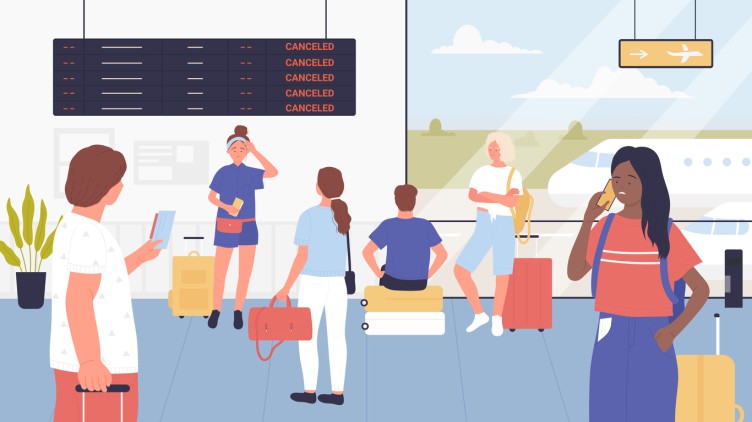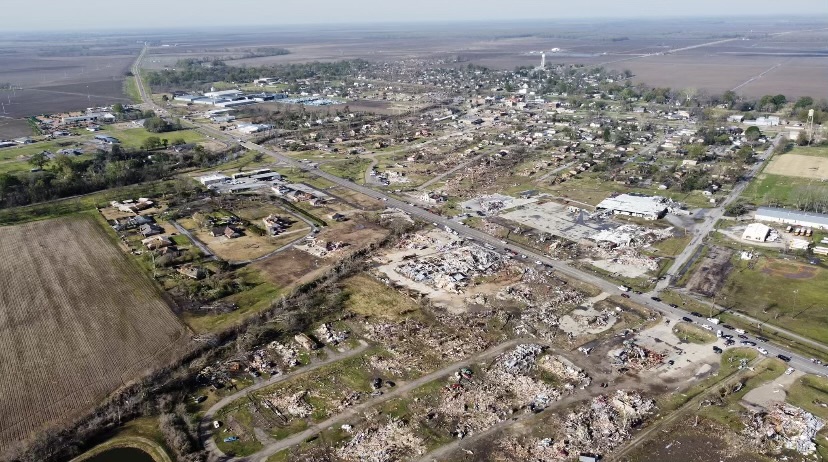Of the many things I love about the farming industry, one of them is the fact that not much happens between Christmas and New Year. Thus, the gap provides a great opportunity to truly unplug. This year, our family was fortunate to be able to head to Mexico. We found a great house on VRBO and planned to gather a larger group. Then Canada decided to provide the US with an early Christmas present of arctic air, causing travel nightmares for all but those living in California.
My wife, Carrie’s parents, had one such travel “adventure”. Their original flight out of Dayton was canceled. Thankfully, a helpful agent quickly rebooked them for the following day out of Cincinnati through Miami. They’d arrive at midnight Christmas Eve. After more delays the next day, they made it to Miami with just enough time to move quickly to their connecting flight. Joyously, they texted Carrie they had boarded their flight. But when Carrie tried to track their flight, she couldn’t find it. Only after their plane had pulled from the gate did everyone learn that they were on the wrong flight. Worse, instead of going to Cabo San Lucas, Mexico, the plane was headed to San Juan, Puerto Rico! Apparently, in the rush to rebook them, the ticket agent apparently mistyped the airport code (Los Cabos (SJD) vs SJU, the code for Puerto Rico). The end result was that Carrie’s 74-year-old parents were headed for a midnight arrival in the wrong country! Oh, and the bag with all their clothes was missing. It was like Home Alone but in reverse…with Gramma. Thankfully, the grandparents were just as wily as McCully Konklin, and they –assisted by some incredible maneuvering from Carrie — routed back to Miami the next day and were able to find a flight through Mexico City, finally arriving Christmas afternoon.
And they were the lucky ones! Many found themselves in far different circumstances, particularly those traveling on Southwest Airlines. From the comfort of my own sunshade, I followed the nightmare that befell Southwest and its weary travelers. I admit that I am a Southwest convert. I initially hated its cattle-car loading style and avoided flying them as much as possible, particularly for business travel. But as they grew their hub in Denver, we began flying them more and more. I came to appreciate their friendly staff and flexible change rules. While others struggled with service issues, Southwest seemed more reliable and certainly more friendly. I then read their history in a book by their founder, Herb Keller, and liked their strategy. I also applauded their response through the pandemic of staying running and — unlike almost every other airline — avoiding layoffs. So I have been more focused on them than others and was frankly shocked as they melted down.
What happened?
Obviously, I am very much an outsider. But even at this early stage, it appears there were three major factors that caused Southwest to make headlines for all the wrong reasons.
1. People Management Systems. The first and most prominent is their back-end people management system. By their own admission, the system is decades old. When the storm struck a massive swath of the country, Southwest began doing what it normally does, rerouting planes and crews to plug holes. But as the system spread, Southwest’s process and systems for managing the location and hours of its pilots and crews failed. Their own people spent hours and hours on hold trying to reach a centralized call center to find out where to go. But the call center couldn’t track the location of the teams. Crews then began to run out of hours, which compounded the issue. Thus, it wasn’t that Southwest didn’t have the people or the planes, but didn’t have the systems to support them.
2. Point-to-Point vs Hub & Spoke. Southwest’s challenges were compounded by its point-to-point strategy. Unlike other airlines that operate a hub-and-spoke model, Southwest largely flies between cities directly. But when chaos reigned, where other airlines could quickly gather from a pool of crews and planes at the hubs, Southwest was spread out, with little ability to support the decentralized crews.
3. Explosive Growth. The third contributing factor – in my mind – was the fact that Southwest had been going through explosive growth. Southwest looked at the pandemic as an opportunity. Instead of laying off people, they kept flying and expanded routes abandoned by other airlines. They added dozens of new routes and added thousands of new people. So when the storm hit, Southwest not only had outdated systems and processes but they had a huge chunk of new people who were likely struggling with the new system. The result was abysmal performance, stranding thousands and thousands of passengers during a critical holiday period, letting down the very people they spent so much time courting.
What are the leadership lessons?
Systems matter. One of the things I admire most about Southwest Airlines is its friendly customer focus. They seem to have a strong culture of customer-oriented people, from the flight crew to the pilots and ground crews, I can’t recall a bad interaction with a Southwest employee. They are about the only airline I can say that about. However, they clearly neglected their back-end systems. As one of my favorite leadership podcasters, Craig Groeschel, often says, “Its the things no one sees that lead to the results everyone wants.” In focusing on your customers, however, you can’t neglect the back-end systems that allow you to do exactly that. What good is a great customer relationship if you can’t deliver the goods on time? Or you don’t have those goods because your backend system got the inventory screwed up? Or if you bill them wrong? Or if you are too slow in your delivery because you don’t know where your delivery trucks and drivers are? This is why great companies focus on operational excellence and continuous improvement. You have to have strong systems and robust processes to support strong sales and operations teams in the field.
People matter. What good is a $100 million aircraft if you don’t have the crew to fly it? In our business, What good is a $500,000 spreader if you don’t have the right driver or the right tender to support it and keep it running? Or the right maintenance completed so it can run? Southwest had the right plane and the right people. Indeed, one of Southwest’s great strengths was its interoperability. They use the same Boeing 737, which means they can switch planes, switch pilots and switch flight crews nearly seamlessly. Until they couldn’t. In this case, it was their people management system that struggled. They had flight crews waiting on hold for eight hours trying to get hold of someone on the phone to find out where they were supposed to go. Southwest also relied on mandatory overtime. This meant that Southwest was forcing crews to work and was running lean. As crews began to hit their daily hour limits mandated by law, they didn’t have the reserve of people to backfill. Other airlines, which relied on incentives and voluntary hours had better attendance and fewer no-shows.
Watch the Speed of Growth. Growth is great. But every system and every process has a limit on its throughput. An engine may be designed to run at 3500 rpms but will break if run past 7,000 for long. Processes and Systems are the same way, particularly when they rely on people. In this case, Southwest’s growth not only rev’d the engine but added thousands of new people who were likely less familiar with the more manual processes and systems. Their engines weren’t capable of running even to 7,000. The lesson is that while growth is great, if you grow too fast, you risk your people, your processes and your systems not being able to keep up.
Culture Matters. The final lesson is one I am hopeful Southwest will learn as it recovers. Southwest remains a strong company with a strong culture. The massive winter storm is rare in its size and scale and impact at one of the busiest travel times of the year. Southwest has new leadership who has owned its failures and apologized. This gives me confidence they will get to work. Systems and processes can be fixed. It is far harder to fix a culture that isn’t focused on its customers and its people. They have also built up a large reservoir of goodwill with its customer base. They spilled some water from the bucket of trust, but it isn’t empty.
I am confident that Southwest will fix their challenges and move forward. As a frequent traveler of theirs who already booked travel with them to my daughter’s college graduation later this spring, I sure hope so.
Onward!
Jeff





